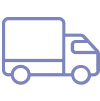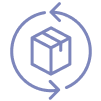Are you considering buying an electric car, van, or moped? If you have your own driveway, it’s easy to charge your EV — but what happens if you don’t? How...
Best Sellers in Safety Barriers and Bollards


Safety barriers are designed to protect workers and equipment from hazards in the workplace. They can be used to create physical barriers, keeping workers and any potential hazards safely apart. Safety barriers are an important part of any health and safety program, and they should be used anywhere that people or vehicles must be prevented from accessing an area.
By using safety barriers, employers can help to ensure that their workers and valuable equipment are protected from injuries or damage. When selecting safety barriers, consider the type of hazard present in the workplace and the best way to protect workers from exposure to the hazard. For example, bollards and car park barriers help to manage traffic, whereas retractable belt barriers are ideal for temporary hazard management.
Safety barriers should be sturdy and durable and placed in a location where they will be most effective in protecting workers. Employers should also ensure that workers are properly trained on how to use safety barriers and regularly inspect the barriers to ensure that they are in good condition.
What type of Safety Barrier do I need?
There are various types of safety barriers and bollards, each designed for specific purposes. With such a vast choice, it's important that you choose the right protection method for you and your workspace.
If you work in a place where forklift trucks or heavy machinery are in operation, you may want to consider installing Metal Bollards. These can be used in walkways to separate pedestrians and vehicles and protect equipment and other workstations from accidental damage.
Warehouse Barriers combine safety and practicality. They work in two ways: by protecting racking, shelving units and other equipment from damage, saving you the expense of premature replacement. The second benefit comes from their highly visible yellow and black finish, which sends out a clear and direct visual warning about where the risky area is to visitors and employees.
No one likes to park in a crowded and poorly controlled car park, and Car Park Barriers enable you to control access to your premises or public space effectively. The highly visible and reflective coating of these barriers gives people safer site access and clear height indicators and helps to prevent any unauthorised use of your space.
Rope Barriers and Temporary Barriers are ideal if you manage large crowds of people and are looking for an effective queue management solution. Suited for short-term deployment, they encourage people to form orderly lines and can be used to keep people away from prohibited and hazardous areas such as traffic and construction areas.
We also offer a wide selection of other barriers and bollards, including Metal Bollards and Retractable Belt Barriers.
Should I install Safety Barriers and Bollards In my workplace?
With a constantly growing demand for protection and security, installing barriers and bollards in your workplace may provide you with the peace of mind you are looking for.
Feel free to have a look at our full range of barriers and bollards that have all been tried and tested to the highest of standards – as evident from our 4.8 out of 5 Trustpilot rating.
If you require assistance choosing the best product for you, please do not hesitate to contact our friendly team, who will be more than happy to help.



























